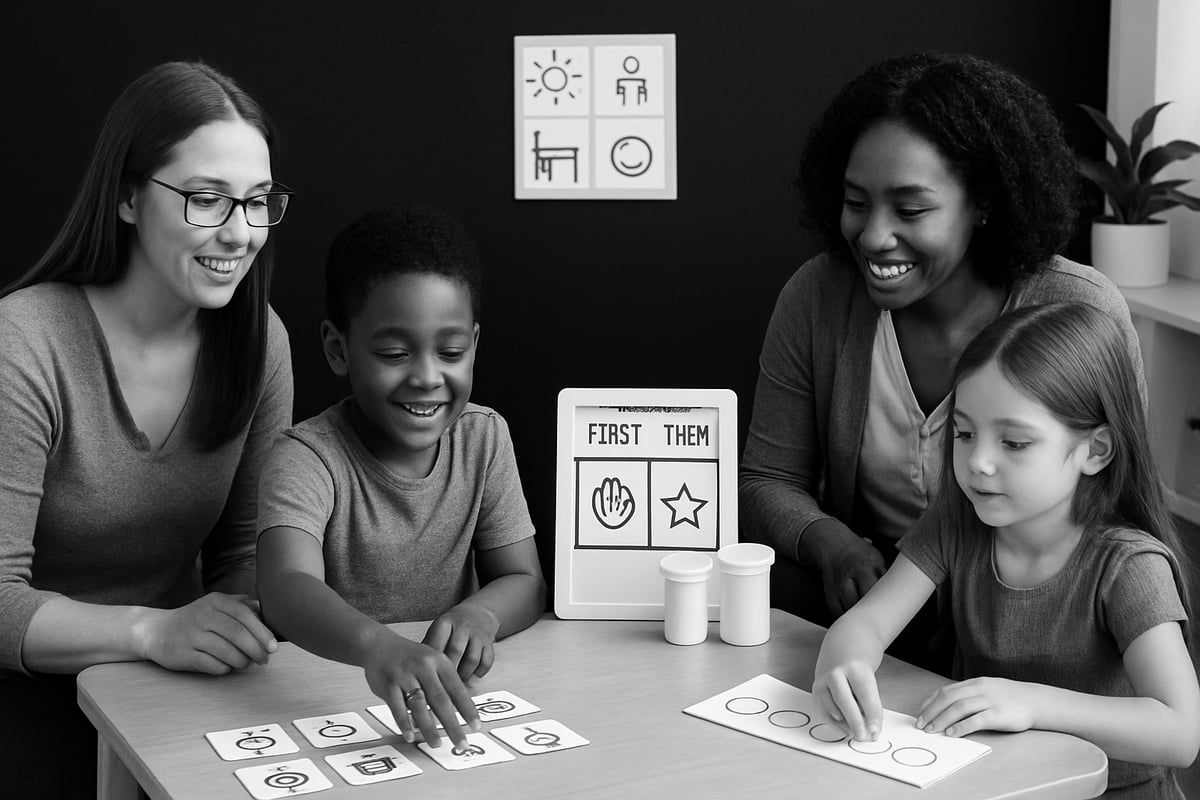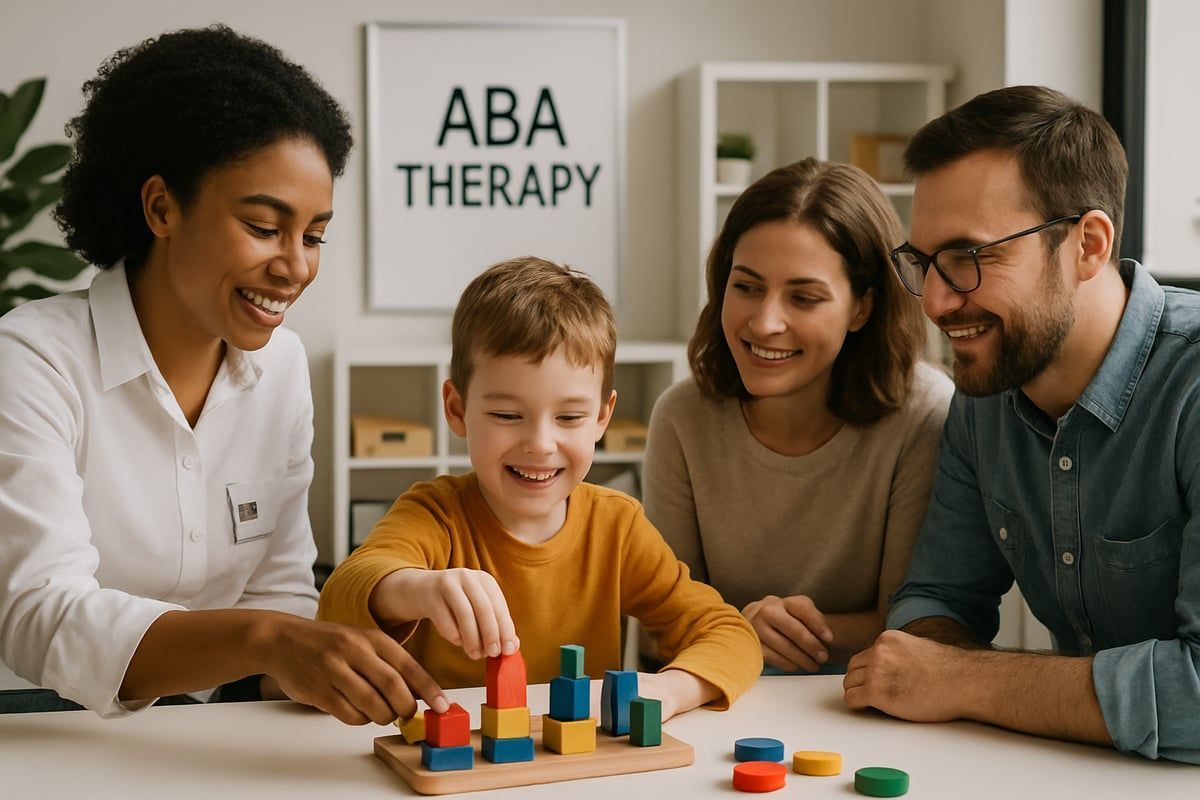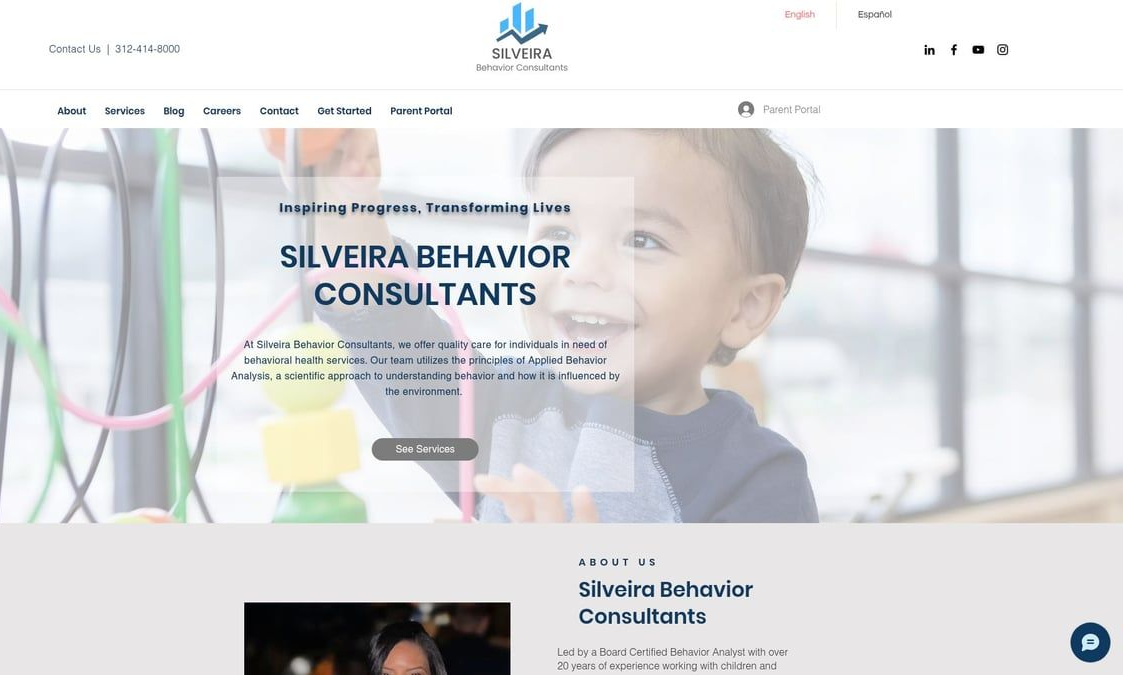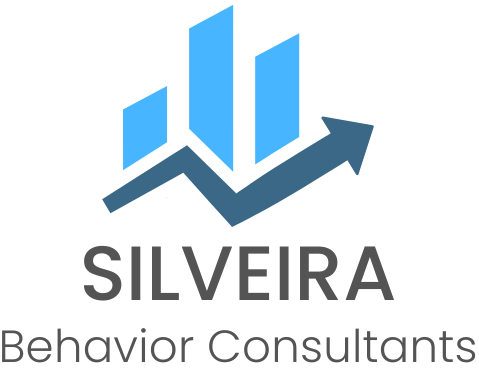Demand for effective interventions for autism and developmental disabilities is growing rapidly in 2025. Applied Behavior Analysis (ABA) treatment continues to stand out as the gold standard in evidence‑based care, making it essential for families, educators, and professionals to understand its principles and processes.
This guide empowers you to navigate ABA treatment options—from core concepts to the latest advancements. You’ll explore ABA fundamentals, step‑by‑step treatment processes, proven benefits, tips for choosing providers, recent research, and actionable strategies for real‑world success.
Understanding Applied Behavior Analysis (ABA)
Understanding ABA treatment is critical for anyone seeking effective strategies for behavioral change. ABA is a
scientific, evidence‑based approach that has transformed countless lives by teaching meaningful skills and reducing challenging behaviors.
Core Principles of ABA
- Reinforcement: Encouraging positive behaviors through rewards.
- Prompting: Guiding learners toward correct responses.
- Shaping: Gradually building complex skills step by step.
ABA is widely recommended because it is measurable, adaptable, and supported by decades of research. While misconceptions exist—such as the idea that ABA creates “robotic” behaviors—the reality is that modern ABA emphasizes dignity, personalization, and family involvement.
By diving into these core concepts and principles, families and professionals can see how ABA treatment may help individuals achieve independence, communication, and long‑term success.

What is Applied Behavior Analysis (ABA)?
Applied Behavior Analysis (ABA) treatment is a scientific method for understanding and changing behavior. Rooted in behavioral psychology, ABA was developed in the 1960s and has since become a cornerstone of evidence‑based interventions. Its focus on observable and measurable behaviors makes progress clear, trackable, and reliable.
Historically, ABA was first used to support children with autism, but its reach now extends far beyond. Built on the principle that behavior can be shaped through systematic teaching and reinforcement, ABA continues to evolve as a trusted approach for diverse populations.
For a deeper look at ABA’s origins and applications, see the Basics of Applied Behavior Analysis guide.
Principles and Core Concepts of ABA
At the heart of ABA treatment are foundational principles such as reinforcement, punishment, and extinction. ABA breaks down behavior into three core parts, known as the ABCs of behavior:
The ABCs of ABA
- Antecedent: What happens before a behavior
- Behavior: The observable action
- Consequence: What follows the behavior
Data‑driven decision‑making is key. Therapists collect and analyze data to guide every step, ensuring interventions are effective. For example, using positive reinforcement—such as praise or a favorite toy—can motivate children to learn new skills. This systematic approach is why ABA treatment consistently leads to measurable progress.
Who Can Benefit from ABA?
ABA treatment is widely recognized for supporting children diagnosed with Autism Spectrum Disorder (ASD). However, its benefits extend to individuals with other developmental disabilities, including ADHD and Down syndrome.
ABA is effective across multiple settings:
- Schools
- Homes
- Community programs
For instance, school‑aged children can use ABA strategies to develop social skills and improve classroom behavior. According to the CDC, 1 in 36 children were diagnosed with ASD in 2023, highlighting the growing need for effective ABA treatment across diverse populations.
Types of ABA Interventions
ABA is not a one‑size‑fits‑all approach. Several types of interventions are tailored to individual needs:
Common ABA Interventions
- Discrete Trial Training (DTT): Highly structured, skill‑by‑skill teaching
- Natural Environment Teaching (NET): Learning in real‑world settings
- Pivotal Response Training (PRT): Focus on motivation and key skills
- Functional Communication Training (FCT): Building communication abilities
For example, DTT is often used to teach language skills step by step, while NET helps children practice daily living skills in their natural environment. This flexibility allows ABA treatment to address a wide range of developmental goals.
Myths and Misconceptions about ABA (H2)
Despite its success, ABA treatment is sometimes misunderstood. Common myths include the belief that ABA is rigid, only suitable for young children, or lacks compassion.
Setting the Record Straight
- ABA is adaptable for all ages, not just young kids.
- Modern ABA emphasizes person‑centered and compassionate care.
- Interventions are creative, flexible, and tailored to individual needs.
Today’s providers focus on dignity, respect, and individual choice. The field continues to evolve, with a growing emphasis on making ABA supportive and empowering for everyone.
The ABA Treatment Process: Step‑by‑Step
Understanding the step‑by‑step process of ABA treatment helps families and professionals set clear expectations from the start. Each stage is carefully designed to ensure interventions are personalized, data‑driven, and effective for meaningful progress.
From initial consultation and assessment to individualized treatment planning and ongoing progress monitoring, ABA clinics follow structured processes that prioritize measurable outcomes and family involvement.

Initial Assessment and Goal Setting
The journey of applied behavior analysis (ABA) treatment begins with a thorough assessment. This includes caregiver interviews, direct observations, and standardized tools to build a complete picture of the individual’s strengths and needs.
A Functional Behavior Assessment (FBA) is often conducted to understand why challenging behaviors occur. This process identifies triggers, patterns, and motivators. Individualized goal setting ensures treatment targets meaningful skills for both the person and their family. By tailoring goals to each individual, ABA treatment becomes a truly personalized approach.
Developing a Personalized Treatment Plan
Once assessments are complete, the team designs a customized treatment plan rooted in collected data. This plan outlines specific goals, intervention strategies, and measurable outcomes. Caregivers and multidisciplinary team members are included to ensure alignment with daily life. Goals may focus on communication, self‑care, social skills, or reducing challenging behaviors. The process is flexible, adapting to the individual’s evolving needs. Personalization is the foundation of effective ABA treatment, supporting real‑world progress.
Implementing ABA Interventions
With a plan in place, ABA treatment moves into action. Evidence‑based teaching strategies are selected and tailored to the individual’s learning style. Therapy sessions are structured for consistency, often blending Discrete Trial Training (DTT) with Natural Environment Teaching (NET). Session frequency and duration depend on goals and progress. Board Certified Behavior Analysts (BCBAs) oversee the process, while Registered Behavior Technicians (RBTs) deliver interventions directly. This collaborative approach ensures ABA treatment is systematic and responsive.
Data Collection and Progress Monitoring
Continuous measurement is a cornerstone of ABA treatment. Every targeted behavior or skill is tracked in real time, often using digital apps or specialized software. Therapists graph progress, making trends easy to visualize. This data‑driven approach allows the team to fine‑tune interventions, ensuring they remain effective and relevant. If a strategy isn’t working, adjustments are made quickly. Consistent data collection keeps ABA treatment objective, accountable, and results‑oriented.
Parent and Caregiver Training
Family involvement is essential for ABA success. Parents and caregivers receive training through workshops, in‑session coaching, and written guides.
Examples of Family Engagement
- Practice ABA techniques at home
- Join group or individual training sessions
- Access ongoing professional support
Studies show that when families are actively involved, progress is faster and more sustainable. ABA treatment empowers caregivers to reinforce skills beyond therapy sessions.
Generalization and Maintenance of Skills
The final step in ABA treatment focuses on transferring skills to real‑world settings. Therapists use strategies that help individuals apply learned skills across environments and with different people. Ongoing support prevents regression and encourages independence. For example, communication skills practiced in therapy are applied at school, in the community, and at home.
By prioritizing generalization and maintenance, ABA treatment ensures long‑term, meaningful change.
Benefits and Effectiveness of ABA Treatment
Families and professionals often ask what sets ABA treatment apart from other interventions. The answer lies in decades of research, measurable outcomes, and countless success stories. ABA consistently demonstrates effectiveness in improving communication, social skills, daily living abilities, and reducing challenging behaviors. This evidence‑based approach is why ABA remains the gold standard for autism and developmental disabilities.

Evidence‑Based Outcomes of ABA Treatment
Applied Behavior Analysis (ABA) treatment is one of the most studied behavioral interventions worldwide. Large‑scale meta‑analyses consistently show that ABA leads to significant improvements in communication, social interaction, and adaptive living skills for individuals with autism and other developmental disabilities. Research highlights measurable gains in language ability and daily functioning. The success of ABA is not anecdotal—it is backed by rigorous data and peer‑reviewed studies. For an in‑depth review of measurable ABA outcomes, see Evidence‑Based ABA Outcomes.
Short‑Term and Long‑Term Benefits
Starting ABA treatment early can make a dramatic difference. In the short term, children often gain new skills and reduce challenging behaviors. Long‑term, ABA fosters independence, academic achievement, and improved quality of life.
A landmark study by Lovaas (1987) found that 40% of children in intensive ABA programs made significant progress, including higher IQ scores and improved academic performance. These benefits extend beyond childhood, offering families hope for lasting change.
ABA Across the Lifespan
ABA treatment is effective for toddlers, school‑aged children, teens, and adults. The approach adapts to each stage of life, addressing needs from early language development to vocational and community skills.
For example, ABA helps adolescents build job readiness and social relationships, while adults may focus on independent living. This flexibility ensures ABA remains relevant and beneficial throughout a person’s lifetime.
Addressing Criticisms and Ethical Considerations
Some critics question the intensity or generalization of ABA treatment. Modern ABA addresses these concerns with strict ethical guidelines. The Behavior Analyst Certification Board (BACB) emphasizes dignity, respect, and client choice.
Therapists today focus on compassionate, person‑centered care, ensuring interventions align with each individual’s values and goals. Ethical ABA is about partnership, transparency, and empowering clients to make meaningful progress.
Real‑Life Success Stories
Behind every data point in ABA treatment is a real person. Families report children gaining verbal skills, forming friendships, and achieving milestones once thought impossible. Therapists share stories of teens mastering job interviews or adults living independently. These success stories highlight ABA’s power to transform lives—not just in clinical settings but in everyday experiences that matter most.
Choosing the Right ABA Provider: What Families Need to Know
Finding the best ABA treatment provider means partnering with professionals who understand your unique needs. With many options available, it’s important to know what to look for.
Credentials and Qualifications to Look For
When evaluating providers, check the credentials of staff.
- Board Certified Behavior Analysts (BCBAs): Lead quality programs, requiring advanced education, certification, and ongoing training.
- Registered Behavior Technicians (RBTs): Deliver interventions under supervision, with specialized training.
With over 50,000 BCBAs certified in the U.S. as of 2024, families have access to a wide pool of qualified experts.
Service Delivery Models and Settings
ABA treatment can take place in various settings:
- Clinic‑based: Structured, with access to specialized resources.
- Home‑based: Personalized and convenient, involving the family.
- School‑based: Supports learning and peer interaction.
- Community‑based: Promotes real‑world skill use.
Discuss these options with providers to ensure the model aligns with your goals.
Individualization and Cultural Sensitivity
Effective ABA treatment is tailored to each person’s strengths, needs, and background. Providers should respect cultural, linguistic, and family differences.
- Look for bilingual therapists if needed.
- Ask about multicultural programming and staff training.
- Ensure goals reflect your child’s identity and values.
Parent Involvement and Communication
Family engagement is a key ingredient in ABA success. Providers should encourage regular communication and empower parents to participate.
- Expect updates through meetings, reports, or digital platforms.
- Join parent training sessions and workshops.
- Share home observations to inform treatment plans.
Evaluating Program Quality and Outcomes
Before committing to a provider, evaluate their approach to quality and results. Ask:
- How is progress measured and reported?
- What data collection methods are used?
- Can you review sample data graphs or success stories?
Transparent tracking and clear outcomes are signs of a reputable program.

Silveira Behavior Consultants: Personalized ABA Services
Silveira Behavior Consultants delivers individualized ABA treatment throughout the Chicago area. Their experienced BCBAs provide clinic‑based, in‑home, and school consultation services, along with social skills groups and parent training.
With a focus on personalization, cultural sensitivity, and measurable progress, Silveira Behavior Consultants empowers families with compassionate, evidence‑based care.
The team emphasizes multicultural, affordable, and evidence-based care, ensuring every family receives support tailored to their needs. With a family-centered approach and flexible service delivery, Silveira Behavior Consultants partners closely with parents to achieve the best possible outcomes. Contact them for a consultation or more information about their services.
Innovations and Trends in ABA for 2025
The field of applied behavior analysis treatment is rapidly evolving to meet the changing needs of individuals and families in 2025. New technologies, updated assessment tools, and a stronger focus on compassion are shaping the future of ABA. Let’s explore the top innovations and trends transforming applied behavior analysis treatment this year.
Technology Integration in ABA
Technology is revolutionizing applied behavior analysis (ABA) treatment in 2025. Digital data collection platforms, telehealth sessions, and virtual parent training are now standard in many programs. Therapists use ABA therapy apps to track progress in real time, making it easier to adjust interventions quickly. Over 70% of providers now use digital platforms, improving efficiency and communication with families. For more on these advancements, see ABA Therapy Research Trends 2025 for an in‑depth look at how technology continues to shape ABA treatment.
Advances in Assessment and Intervention
Assessment tools and intervention methods in ABA treatment have seen significant upgrades. New standardized tools provide more accurate and individualized profiles of strengths and needs. AI‑powered behavior tracking is gaining traction, allowing therapists to spot subtle patterns and tailor interventions more precisely. There is also a growing emphasis on naturalistic teaching, embedding interventions into daily routines and client‑driven goals. These innovations ensure ABA treatment remains data‑driven and responsive, paving the way for better outcomes.
Person‑Centered and Compassionate Care
A major trend in ABA treatment is the shift toward person‑centered, compassionate care. Therapists are adopting trauma‑informed and neurodiversity‑affirming practices to respect each individual’s unique experience.
Clients and families now play a bigger role in setting goals, fostering autonomy and dignity. Recent studies highlight the importance of listening to those receiving care, ensuring ABA is not only effective but also empowering and respectful.
Collaboration and Interdisciplinary Approaches
ABA treatment is increasingly collaborative in 2025. Teams often include speech therapists, occupational therapists, educators, and families, working together to develop comprehensive care plans. For example, an integrated approach may combine communication goals from a speech therapist with daily living skills targeted by ABA. This interdisciplinary teamwork leads to more holistic and sustainable progress. Collaboration strengthens outcomes and ensures care is adaptable to each individual’s changing needs.
Policy, Funding, and Access Updates
Access to ABA treatment continues to expand thanks to new policy developments and funding initiatives. Changes in insurance coverage, Medicaid, and state mandates are making therapy more affordable and widely available. As of 2024, 48 states require insurance coverage for ABA, and new state‑level funding is helping families overcome financial barriers. Staying informed about policy changes helps families and providers navigate the evolving landscape of support in 2025.
Practical Tips for Families Starting ABA
Beginning ABA treatment can feel overwhelming, but preparation empowers families to make the most of each step.
Preparing for the First Session
Your first ABA session usually begins with intake and assessment. Gather important documents such as diagnostic reports, IEPs, and previous evaluations to help the team understand your child’s history and needs.
Prepare a list of questions for your Board Certified Behavior Analyst (BCBA), such as:
- What will the assessment involve?
- How will you measure progress?
- What are the next steps?
Your input is valuable in shaping the direction of ABA treatment from day one.
Supporting Progress at Home
Consistent support at home maximizes ABA benefits. Work with your therapy team to reinforce new skills outside of sessions.
Examples include:
- Using a visual checklist for morning routines
- Practicing communication skills during family meals
- Celebrating small successes with positive reinforcement
Research shows parent‑led involvement significantly improves outcomes.
Advocating for Your Child’s Needs
Advocacy is essential in the ABA journey. Collaborate with educators, therapists, and community resources to ensure your child’s needs are met across all settings.
Bring documentation of progress to IEP meetings, ask for accommodations, and build a support network of families and professionals. Active participation makes ABA treatment more effective and impactful.
Silveira Behavior Consultants: Personalized ABA Services
At Silveira Behavior Consultants, we believe in the power of personalized, compassionate care to help individuals thrive. Our team partners with families every step of the way, offering clinic‑based, in‑home, and school consultation services, along with parent training and social skills groups.
If you’re ready to explore how ABA therapy can fit your unique situation, don’t hesitate to Inquire About Services. We’re here to support you every step of the way.





